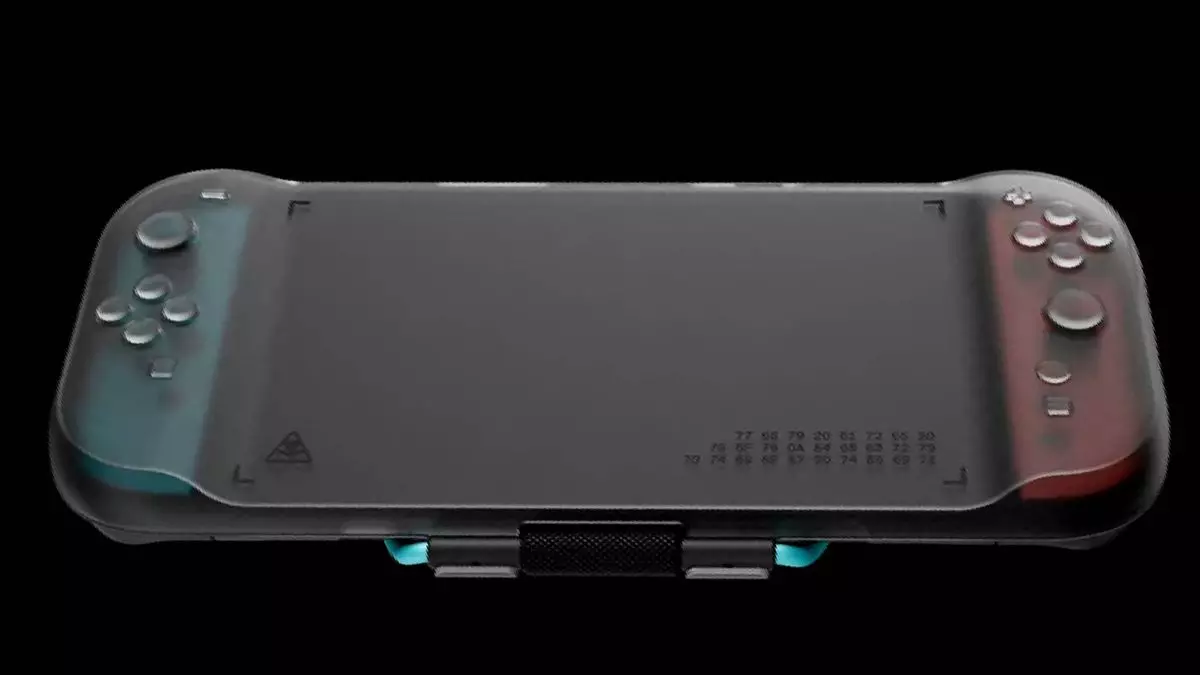The gaming community is buzzing with excitement as details of Nintendo’s highly anticipated successor to the Switch—dubbed the Switch 2—begin to surface. With a recent 360-degree render showcased by Dbrand, a popular manufacturer of electronic cases, we have the opportunity to glean a bit more insight into what this next-generation console could offer. While renders from third-party brands often come with a grain of skepticism, Dbrand’s credible claims and observations concerning the Switch 2’s dimensions have captured the attention of gamers and analysts alike.
According to Adam Ijaz, the CEO of Dbrand, the Switch 2 is set to measure 270 mm in width, 116 mm in height, and 14 mm in thickness. For context, this means that the new device is notably larger than its predecessor—the Switch OLED, which has dimensions of 242 mm x 102 mm x 13.9 mm. This increase in size points to a more robust build, likely in response to the preferences of modern gamers who seem to favor larger handheld devices. Competing devices, such as the Steam Deck and the Lenovo Legion Go, have set a precedent for heftier consoles, and one might suggest that Nintendo is strategically joining this trend in order to remain relevant in the fast-evolving market of handheld gaming.
What’s particularly noteworthy is that the updated Switch 2 dimensions are still smaller than the Steam Deck, which raises questions about how Nintendo plans to balance size with usability. The overall bulkiness might also suggest that Nintendo is attempting to pack in improved hardware within the chassis, something that was often cited as lacking in the original Switch.
Beyond sizing, Ijaz also indicated possible innovative features for the Switch 2. The suggestion that the Joy-Cons are magnetically attached, with a button for ejection, hints at a design evolution meant to enhance user experience. The introduction of a second square button marked with “C” beneath the Home button adds an element of intrigue, though its purpose remains speculative. Gamers are left to ponder whether this will be a capture button, a clamp, or something entirely different, inviting a wave of conjecture and anticipation as to what new gameplay mechanics could be implemented.
Furthermore, there are murmurs about a new eight-inch screen for the Switch 2, growing slightly larger than its predecessor’s display and coming into direct competition with other handhelds like the Steam Deck OLED. However, an important question remains regarding the type of display—whether it will be of the IPS or OLED kind. Speculation suggests that an IPS display might initially launch, with the possibility of an OLED option being introduced later on, a strategy that could allow Nintendo to refresh its technology without overwhelming initial manufacturing capabilities.
The recent drone of rumors and leaks isn’t just another attempt to build hype; it’s indicative of Nintendo recognizing the trends within the gaming market. The upward trajectory of handheld gaming PCs shows no signs of stagnation, and it appears that Nintendo is utilizing the lessons learned from the success of competing models. The apparent choice to increase the console’s girth aligns with a broader market sentiment that larger devices are not just accepted but welcomed by consumers.
Many factors come together in the anticipation of the Switch 2, including the refined positioning of charging ports, as suggested by the presence of another Type-C port on the device. This adjustment would address one of the original Switch’s most significant shortcomings: awkwardly positioned charging options that limited gaming comfort during use.
Despite the excitement surrounding the Switch 2, there remains an air of uncertainty regarding its release date. Nintendo President Shuntaro Furukawa has hinted at a goal for a release within the fiscal year ending March 31, 2025, but specifics remain elusive. The gaming landscape could be ripe for a new powerhouse, but such optimism must be tempered with patience as Nintendo balances innovation with the nostalgia that has driven its success.
Ultimately, the success of the Switch 2 hinges not only on its impressive specs and appealing design but more critically on whether it can exceed expectations built from its predecessor. Unfortunately, the skepticism stemming from the original device’s hardware performance lingers. However, whispers of Nvidia’s DLSS technology potentially supporting the new console offer a glimmer of hope for a gaming renaissance that fans ardently yearn for. As anticipation builds, one can’t help but dream of the possibilities this new console could unlock for handheld gaming enthusiasts everywhere.

